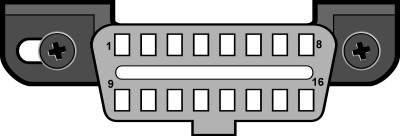The OBDLink MX+ is a powerful and versatile OBD-II adapter, but understanding its compatibility with your vehicle is crucial. This guide provides detailed information on Obdlink Mx+ Compatible Vehicles, ensuring you can make an informed purchase.
OBD-II compliance, not the vehicle’s manufacturing location, determines compatibility with OBDLink adapters. Compliance depends on the intended sales region. Your vehicle must adhere to the On-Board Diagnostics version 2 (OBD-II) standard to utilize the OBDLink MX+.
OBDLink MX+ Compatibility in the United States
All cars and light trucks sold in the US from model year 1996 onwards are OBD-II compliant due to federal regulations. This broad compatibility ensures the OBDLink MX+ works seamlessly with a vast range of vehicles in the United States. The Environmental Protection Agency (EPA) website offers further details on these regulations. This includes popular manufacturers such as Ford, Chevrolet, Toyota, Honda, and many more.
 An image of the SAE standard J1962 Vehicle Connector used for OBD-II information.
An image of the SAE standard J1962 Vehicle Connector used for OBD-II information.
Important Note: While generally compatible, the OBDLink MX+ may not function with all hybrid or electric vehicles due to their unique emission systems. Consult your vehicle manual or dealership for confirmation.
OBDLink MX+ Compatibility Outside the United States
OBD-II compliance varies significantly outside the US. Refer to the table below to determine your vehicle’s compliance based on its country of sale and model year. Full compliance indicates mandatory adherence to OBD-II standards, while limited compliance suggests potential variations.
| Country of Sale | Full OBD-II Compliance (Model Year and Onward) | Limited OBD-II Compliance (Model Year) |
|---|---|---|
| European Union (Petrol) | 2002 | 2001 |
| European Union (Diesel) | 2007 | 2004-2006 |
| Canada | 1998 | |
| Japan | 2008 | 2003-2007 |
| Australia (Petrol) | 2006 | |
| Australia (Diesel) | 2007 | |
| … | … | … |
This table provides a general overview; specific regulations might exist within individual countries. Always cross-reference with local vehicle regulations for the most accurate information.
Understanding OBD-II Compliance in the European Union
The European Union implemented OBD-II compliance in phases:
-
Gasoline Vehicles: Mandatory compliance for new types began in 2000 and for all types in 2001 (Commission Directive 70/220/EEC, Annex I).
-
Diesel Vehicles: Mandatory compliance for new types started in 2003 and for all types in 2004 (Commission Directive 70/220/EEC, Annex I).
Confirming OBD-II Compliance for Other Vehicles
If your vehicle’s compliance isn’t readily apparent, check under the hood for an emission control information label explicitly stating OBD-II compliance. “OBD-II” can refer to regional variations like California ARB (OBD II), European OBD (EOBD), or Japanese OBD (JOBD).
Consult your owner’s manual or contact your dealer for further assistance, but be aware that not all dealerships are well-versed in OBD-II specifics.
The 16-Pin Connector and OBD-II Compliance
The presence of a 16-pin connector doesn’t guarantee OBD-II compliance. Many manufacturers used this connector before OBD-II implementation. Ensure the connector conforms to SAE J1979 standards for true OBD-II compatibility.
Conclusion
Determining OBDLink MX+ compatibility hinges on your vehicle’s OBD-II compliance, which varies globally. This guide provides a framework for understanding these variations. Always verify compliance using official resources for your specific vehicle and region. Using a compatible scan tool like the OBDLink MX+ empowers you to diagnose and understand your vehicle’s performance better.
